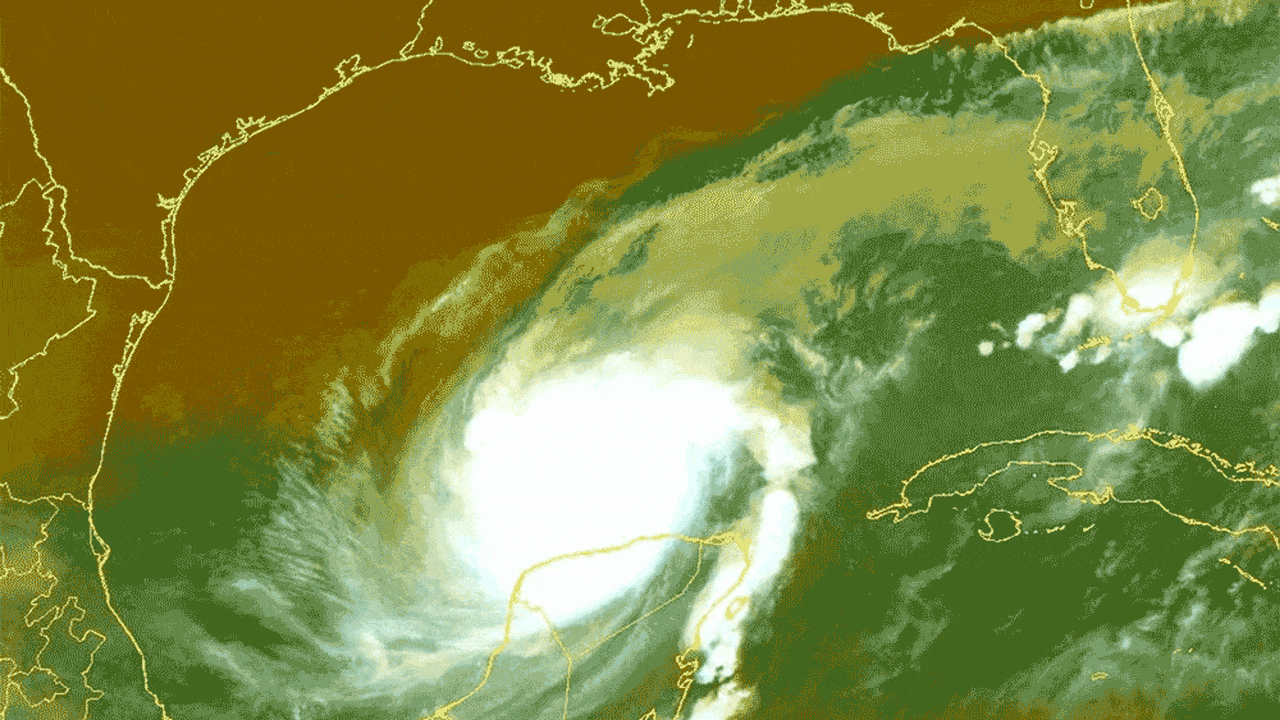Milton update: How are hurricanes categorized and why is there no Category 6?
In a matter of hours, Hurricane Milton grew into a Category 5 storm on Monday, with wind speeds surging by an astonishing 90 mph in just over a day, a process meteorologists call “rapid intensification.” This intensification was caused by unusually warm ocean water in the Gulf of Mexico, which is near record-high temperatures in 2024. On Tuesday morning, Milton slightly weakened to an “extremely powerful” Category 4 storm, but it is expected to grow in size and remain “extremely dangerous” as it approaches Florida on Wednesday night, the National Hurricane Center said. Warm water fuels storms by evaporating quickly, and the rising columns of warm, moist air give hurricanes the energy they need to strengthen rapidly. This heat played a key role in Milton’s explosive growth, making it far more dangerous. How are hurricanes categorized? The Saffir-Simpson Hurricane Wind Scale is a 1 to 5 rating system based on a hurricane’s sustained wind speeds, used to estimate potential property damage. Here’s a quick rundown of the characteristics of each category of hurricane. You can find more detail about the classifications on the website of the National Oceanic and Atmospheric Administration (NOAA) here. Category 1 Hurricane: Winds between 74-95 mph (119-153 km/h) cause some damage to roofs, siding, and power lines, leading to power outages lasting a few days. Category 2 Hurricane: Winds between 96-110 mph (154-177 km/h) cause extensive damage to roofs and trees, with power outages lasting from several days to weeks. Category 3 Hurricane: Winds between 111-129 mph (178-208 km/h) cause devastating damage to homes, trees, and infrastructure, with power and water unavailable for days to weeks. Category 4 Hurricane: Winds between 130-156 mph (209-251 km/h) cause catastrophic damage, with severe roof and wall destruction and widespread outages, leaving areas uninhabitable for weeks or months. Category 5 Hurricane: Winds of 157 mph (252 km/h) or higher cause total roof and wall collapse, isolating residential areas and rendering them uninhabitable for weeks or months. Why is there no Category 6? There is no Category 6 hurricane, because Category 5 is considered the threshold beyond which additional wind speed doesn’t significantly increase the overall likelihood of damage to infrastructure, as the destruction is already near total. However, a study published earlier this year in the Proceedings of the National Academy of Sciences argues that global warming is supercharging some of the most intense cyclones, making them even more formidable. The authors suggest that Category 5 may underestimate the dangers posed by these storms, especially as rising ocean and atmospheric temperatures contribute to their intensity. Michael Wehner, the study’s lead author, told CBS News at the time that his team had measured a number of storms over the years that would qualify as a hypothetical Category 6, including Typhoon Haiyan in 2013.

In a matter of hours, Hurricane Milton grew into a Category 5 storm on Monday, with wind speeds surging by an astonishing 90 mph in just over a day, a process meteorologists call “rapid intensification.”
This intensification was caused by unusually warm ocean water in the Gulf of Mexico, which is near record-high temperatures in 2024. On Tuesday morning, Milton slightly weakened to an “extremely powerful” Category 4 storm, but it is expected to grow in size and remain “extremely dangerous” as it approaches Florida on Wednesday night, the National Hurricane Center said.
Warm water fuels storms by evaporating quickly, and the rising columns of warm, moist air give hurricanes the energy they need to strengthen rapidly. This heat played a key role in Milton’s explosive growth, making it far more dangerous.
How are hurricanes categorized?
The Saffir-Simpson Hurricane Wind Scale is a 1 to 5 rating system based on a hurricane’s sustained wind speeds, used to estimate potential property damage. Here’s a quick rundown of the characteristics of each category of hurricane. You can find more detail about the classifications on the website of the National Oceanic and Atmospheric Administration (NOAA) here.
- Category 1 Hurricane: Winds between 74-95 mph (119-153 km/h) cause some damage to roofs, siding, and power lines, leading to power outages lasting a few days.
- Category 2 Hurricane: Winds between 96-110 mph (154-177 km/h) cause extensive damage to roofs and trees, with power outages lasting from several days to weeks.
- Category 3 Hurricane: Winds between 111-129 mph (178-208 km/h) cause devastating damage to homes, trees, and infrastructure, with power and water unavailable for days to weeks.
- Category 4 Hurricane: Winds between 130-156 mph (209-251 km/h) cause catastrophic damage, with severe roof and wall destruction and widespread outages, leaving areas uninhabitable for weeks or months.
- Category 5 Hurricane: Winds of 157 mph (252 km/h) or higher cause total roof and wall collapse, isolating residential areas and rendering them uninhabitable for weeks or months.
Why is there no Category 6?
There is no Category 6 hurricane, because Category 5 is considered the threshold beyond which additional wind speed doesn’t significantly increase the overall likelihood of damage to infrastructure, as the destruction is already near total.
However, a study published earlier this year in the Proceedings of the National Academy of Sciences argues that global warming is supercharging some of the most intense cyclones, making them even more formidable. The authors suggest that Category 5 may underestimate the dangers posed by these storms, especially as rising ocean and atmospheric temperatures contribute to their intensity.
Michael Wehner, the study’s lead author, told CBS News at the time that his team had measured a number of storms over the years that would qualify as a hypothetical Category 6, including Typhoon Haiyan in 2013.






















